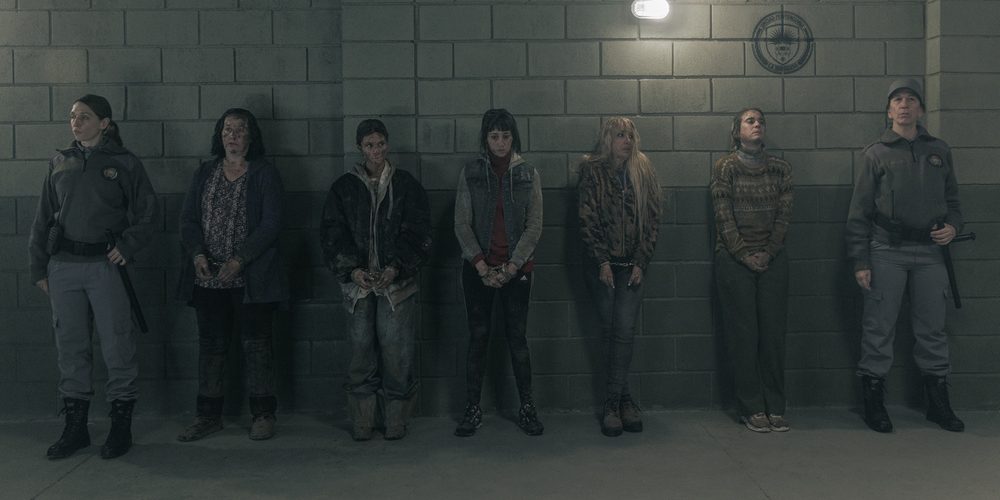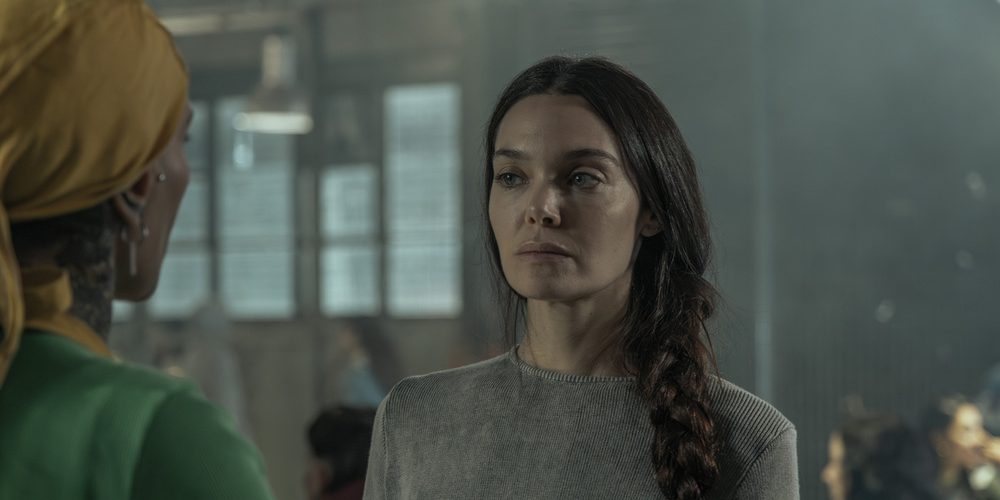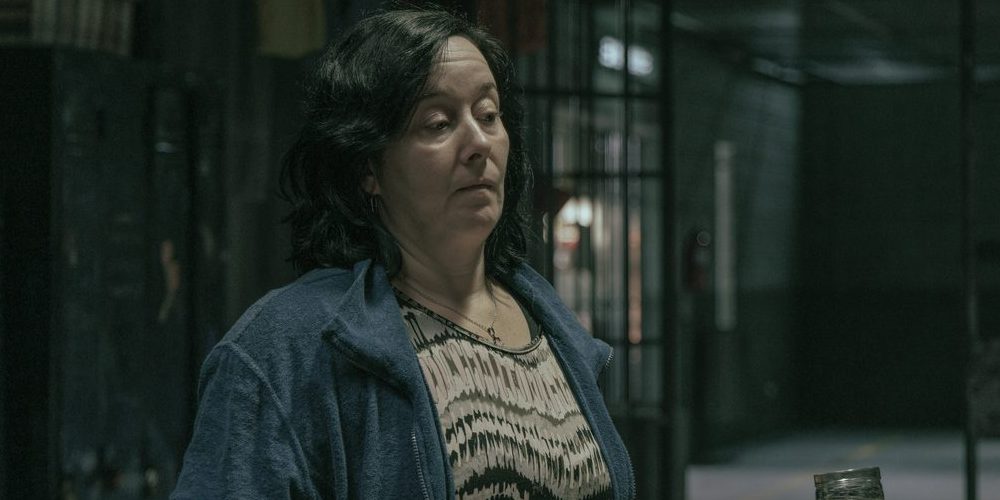In Netflix’s ‘In The Mud’ (Originally Titled: ‘En El Barro’), a group of five women find themselves in a precarious situation when an accident binds them forever. The show, created by Sebastián Ortega, follows Gladys Borges, Marina Delorsi, Olga Giulani, Yael Rubial, and Soledad Rodríguez, whose journey takes an unexpected turn when the prison transport they’re in meets with an accident on the way. However, all the aforementioned women come out unharmed, and the authorities take them to prison. As soon as they reach La Quebrada Penitentiary, they realize that their lives will never be the same again, and if they have to survive, they will have to stick together and navigate a world ruled by powerful forces. As the story progresses, they unravel a terrifying mystery hidden deep within the penitentiary’s walls, involving unexplained disappearances.
While they try to find the person behind these disappearances, Gladys and the others in the group change their personas to blend in with the prison’s dangerous hierarchy and behaviors that help them earn trust. The show’s narrative primarily focuses on how these women try to adapt and figure out how to save themselves from dangerous situations. Moreover, it also explores themes such as the prison system, corruption, and trafficking to enrich the story. By mixing these elements, the series keeps the story grounded and blurs the line between fiction and reality, making it feel like such events could unfold beyond the screen.
In The Mud Is a Fictional Story Showcasing the Prison System With Authenticity
Although the show is fictional and is a spin-off of the 2016 series’ El Marginal,’ ‘In The Mud’ takes a lot of inspiration from how the prison system works across the globe, especially in South America. The series showcases how women face harsh conditions in La Quebrada jailhouse, where overcrowded cells, scarce resources, and the omnipresent fear of corruption mirror the lived experiences of thousands of women behind bars. In the show, women are inside the jail for different crimes such as murder, attempted kidnapping, and more. In reality, many of the women are spending time behind bars for low-level drug offences. Statistics show that countries like Argentina, Brazil, and Ecuador incarcerate between 60% and 80% of their female inmates for such crimes.

There has been a significant increase in women’s incarceration rates in South America, especially in Argentina. The main reasons for this increase are poverty, involvement in illegal activities, and social exclusion. Meanwhile, the women’s prison violates human rights, offers perilous access to health care, and fails to provide adequate education programs. Additionally, gender violence inside prisons is another pivotal part of the series, which has been showcased effectively. A 2024 report reveals that many facilities frequently subject women to invasive body searches, prolonged isolation, and restraints without any individual evaluation. Such practices often heighten the risk of abuse and violence. By featuring these aspects on the show, the makers wanted to keep the narrative grounded and add realism while exploring how women live in such jarring conditions.
For Sebastián Ortega, it was very important to show how the prison system works in Argentina and other countries. To do that, the maker spoke with women who spent their lives in penitentiaries. In an interview, he said, “There are personality traits and reasons for imprisonment that were inspired by the stories told by some of the imprisoned women we spoke with.” The creator took inspiration from the firsthand accounts to shape authentic characters whose struggles and fears reflect real experiences. On the other hand, the show doesn’t just dramatize the struggle of female inmates and their living conditions; it grounds it in grim reality. This story is more than just a prison drama for the show’s creator.
In The Mud Tackles The Theme of Human Trafficking
Apart from focusing on the lives of women in prison, ‘In The Mud’ also explores the theme of human trafficking through the characters of Cecilia Moranzón and Doctor Soriano. Moranzón serves as the Director of the La Quebrada Penitentiary, while Soriano works as the prison doctor. Initially, they both seem to work for the betterment of the facility. However, inmates soon realize that both these pivotal figures are using their powers to exploit women, especially young mothers, for a trafficking network that turns the prison into a place that could be used to find possible victims. In the series, Moranzón takes the newborn babies and small children from their mothers and puts them up for adoption without even asking the parents. The doctor joins her nefarious scheme, making a lot of money. Even though the show gives Moranzón a different motive for running an illegal adoption ring, ‘In The Mud’ showcases South America as one of the regions worst hit by human trafficking.

In June 2024, a 5-year-old boy named Loan Danilo Peña mysteriously vanished from Corrientes County in Argentina. At first, his family believed that their child had gone missing. However, as time passed, the investigating authorities realized that the case might be related to child trafficking. They searched the nearby area, combing through the fields, only to find no trace of Loan. As a result, not just the authorities, but even the community began feeling that the child might have fallen victim to the grim world of child trafficking, where kids are taken away from their families and sent to locations far away before their birth parents or anyone can find them. According to a report, between 2020 and 2023, a total of 5,075 people were freed from trafficking rings.
According to Ana Gabiraldi, who plays Gladys Borges on the show, heinous crimes such as human trafficking and child trafficking happen in real life, and that’s what the title intends to highlight. Speaking in an interview, she noted, “There are these crimes against minors and human trafficking. What do we do? Yes, of course, child trafficking exists. Loan disappeared and was never heard from again. And there must be a lot more that we don’t know about.” By weaving these real-world parallels into its plot, ‘In The Mud’ blurs the line between what’s real and what’s fiction. The series doesn’t just use human trafficking as a plot point; it mirrors the unsettling truths that haunt communities across South America. This approach not only heightens the emotional impact but also sparks awareness about crimes that often remain hidden.
The Netflix Series Explores Prison Gangs With a Realistic Lens
When Gladys and the group enter Le Quebrada prison, they realize that the prison has been divided into two different tribes. One is led by Maria, while the other is headed by La Zurda. However, things change when Amparo takes control of Zurda’s gang, which makes things even more terrifying. Both these tribes are different from one another, and there’s always a tussle for power and control, with each side constantly vying to assert dominance over the prison’s rules and resources. When things get rough, both sides resort to violence, wanting to send a clear message that supremacy is the most important thing inside a prison. This constant struggle showcases how real prison gangs operate, carving out territories and enforcing their codes within the walls of the penitentiary. Consequently, it also sheds light on how opposing sides resort to violence and instill fear in the minds of their opponents.

The fighting between two rival gangs is a grim reality of prisons, and there have been several instances when real riots have taken place inside the jailhouse. In June 2023, at least 46 women died in a riot that took place at a women’s prison in Honduras. According to the BBC, a fight occurred between two rival gangs, and the situation escalated when one gang torched a cell in retaliation. When it comes to the US, a report suggests that the prison gangs are predominantly male. However, approximately 3%-10% of these factions are female. ‘In The Mud’ channels this brutal reality into its storytelling, using the rivalry between two factions to reflect the deep-rooted divisions that often define life behind bars. The continuous tension and sudden outbreaks of violence show how real prison gangs maintain power and control. The show does not glamorize the violence; it portrays it in a way that convinces everyone this is the only way these women can survive in La Quebrada. In doing so, the show draws a haunting parallel to actual events, reminding viewers that such power struggles are a reality in prisons across the world.
Read More: Is Kandahar Based on a True Story?


